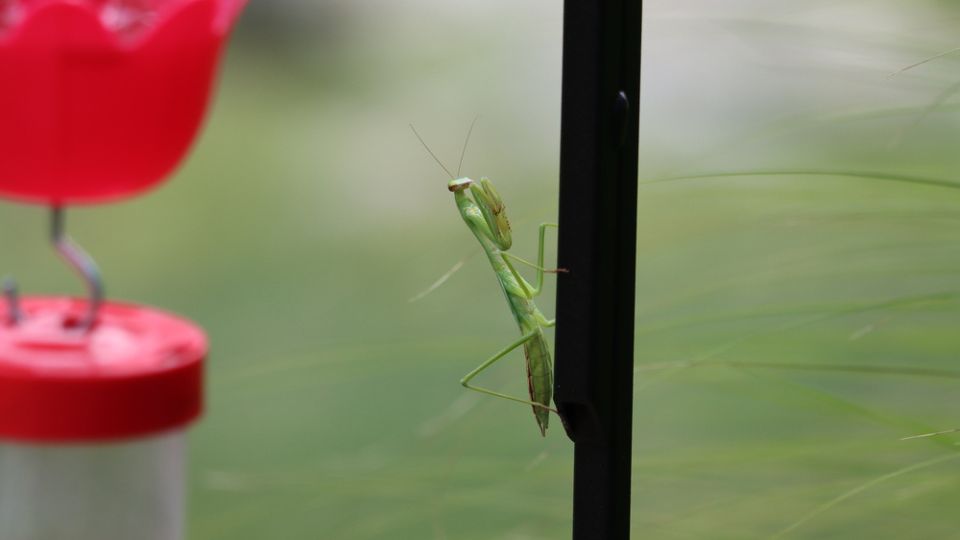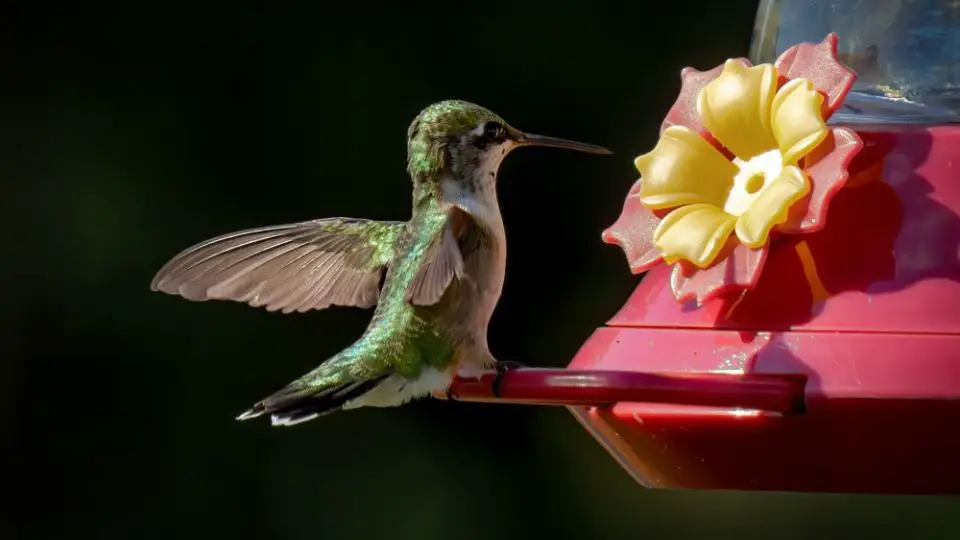You can get rid of black mold in hummingbird feeders with a DIY bleach solution; ensure you rinse it well. Vinegar and hydrogen peroxide solutions are also great natural cleaning agents. These will help you feed hummingbirds and keep your tiny friends happy and healthy all year long.
One of the main issues when feeding hummingbirds is the mold in the
Table of Contents
Why Is Mold Growing in My Hummingbird Feeder ?
Mold can’t grow without specific conditions, like humidity and warmth. Even though feeders aren’t fully submerged in water, they are still prone to buildup and mold growth due to hot weather and the sugar water they contain.
Unfortunately, mold can be deadly for hummingbirds. When it comes to bird feeders that contain liquid, mold will likely develop around ports as they’re constantly wet.
This is where hummingbirds can come in direct contact with the mold, so you should be extra tedious when cleaning those parts. Devote yourself to cleaning the feeders multiple times per week to keep the hummingbirds healthy.
Will Hummingbirds Drink Moldy Nectar?
Hummingbirds are wild birds that love additional food sources. Extra hummingbird nectar is an excellent way of attracting them to your yard. Even though hummingbirds have a poor sense of smell, they’ll likely avoid drinking moldy sugar water.
Plus, sugar will break into other carbohydrates over time. This makes the water less nutritious for the birds, so they may stop consuming it.
Unfortunately, if you don’t clean your feeder and it gets moldy, some hummingbirds may still drink that water. This can cause many diseases and even hummingbird death. This is why it’s crucial that you keep the feeders clean at all times.

Will Black Mold Hurt Hummingbirds?
Once the mold starts growing in the feeder, it can cause many health issues among hummingbirds. Moldy nectar develops a fungus that can infect the hummingbird’s tongue. This disease is called Hummers Candidiasis.
The hummingbird’s tongue will swell, and the bird will eventually stop eating. This will cause hummingbirds to starve to death.
The fungus will cover the bird’s beak, tongue, and trachea. Know that Nystatin is one of the possible treatments, but only a professional should handle a sick hummingbird.
How Do I Get Rid of Black Mold in My Hummingbird Feeder ?
There are a few ways to clean a dirty feeder and several solutions that are entirely safe for hummingbirds, like hydrogen or white vinegar and water. Pay close attention to the feeders in your yard. If you notice that only a few hummingbirds are around it, and you used to see plenty, check it for mold and buildup.
Additionally, if you’re replacing the water solution often, you’ll likely see the mold starting to develop. If you act in time, you’ll keep the hummingbird safe, plus the mold will be easier to clean. Here’s what you can do.
How Often Should I Clean My Hummingbird Feeder ?
If you live in a warmer climate, you should empty and clean your feeders at least twice a week. Once the cooler weather comes, you can reduce the frequency to about once a week.
Remember that leaving the feeders out during winter doesn’t stop the birds from migrating. It actually helps them remain satiated in colder conditions.
In case the hummingbirds empty the feeder more often, you should clean it every time you refill it. Start by using hot tap water. If you notice more buildup happening, clean the feeders with stronger solutions.

How Do You Clean Hummingbird Feeders?
Ideally, you’ll want to take the time for a thorough cleaning and get into all nooks and crannies. Throw away any remaining sugar water. Disassemble the feeder described in the manufacturer’s guidelines and soak it in hot water.
Remember that feeding ports are the most moldy spots, so pay special attention to those. You’ll also need these items to clean a feeder, combined with special cleaning solutions:
- Toothbrush
- Different sized bottle brushes
- Cloth
- Water or Sink
- Bucket for rinsing
Remember that hummingbird feeders aren’t usually built from the same plastic as dishwasher-safe dishes. This is why it’s best to avoid the dishwasher if you own a regular feeder and use other water solutions once it gets dirty.
What Solutions Can You Use to Clean Hummingbird Feeders?
Here are some of the safest recipes you can try—using one at a time—as
- 1 part vinegar to 2 parts water solution
- White vinegar is a natural disinfectant that kills mold
- 1 part hydrogen peroxide to 2 parts water
- Provides easy disinfection
- Dish soap
- Soapy water has sterilizing properties
- 1/4 cup bleach to one gallon of water
- Use bleach only when necessary, as it’s a strong chemical
- 1 part bleach to 9 parts water
Once you’re sure there’s no more residue, leave the feeders to air dry. You can do this to bird baths as well, as water in them can also get stale. Use the same cleaning solutions as these are safe for the birds.
What Can I Do to Prevent Mold in My Hummingbird Feeder ?
Visit the feeder often and check if it’s moldy. At least check it every time you pour the fresh nectar. You can also choose a feeder that’s easier to clean.
For example, a saucer feeder is well designed, and you can use a q-tip to clean the ports. Alternatively, you may find some dishwasher-safe feeders.
Finally, you can purchase additional feeders. Keep one set dry and clean and the other outside. That’s how you’ll always have additional food to offer to hummingbirds, even while you clean and dry the other set of feeders.
Other Dangers for Hummingbirds Around the Feeder
Hummingbird feeders can be the source of other issues that can harm the birds. Besides mold, sugar water can ferment, and fermentation can also cause multiple health problems.
If you use red dye in this food source, hummingbirds can get sick from the dye. This is why you should only use white sugar to make hummingbird food.
These feeders may also attract other birds that don’t eat seeds. For example, orioles might disturb the hummingbirds around the feeder. If they can’t fight them and there’s only one feeder, hummingbirds will likely leave to find other food sources until orioles are done eating.

Do Feeders attract Hummingbird Predators?
Hummingbird feeders can fill up with bugs, alive or dead. Live insects usually won’t interfere with how the hummingbirds eat, but they can drown in the nectar and clog the openings.
Plus, if praying mantises, bees, or wasps visit the feeder, they can present a danger to the tiny birds. Predators will quickly learn that hummingbirds are coming to the feeder. Thankfully, these small birds will also instantly notice any danger and move away.
This is why you should hang the feeder so that snakes, cats, and other predators can’t climb on it. Experienced bird watchers use a pole in the middle of the yard to secure their feeders.
Mold in Hummingbird Feeders Overview
If you’re hosting hummingbirds in your garden and have sugar water feeders, seeing them moldy is the last thing you want. Unfortunately, this feeding solution can easily ferment, attract bacteria, and grow mold.
Plus, if you live in warmer areas, your feeders will develop mold more often, and you’ll have to clean them almost daily. The mold, fermentation, and fungi in the nectar can harm hummingbirds.
Luckily, you can use various cleaning agents to remove the mold from the feeder. Make sure to thoroughly scrub it and let it air dry before you refill it with a fresh nectar batch.

